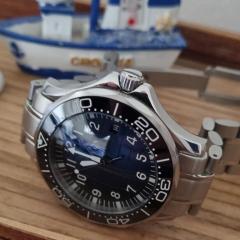Elgin Pocket Watch Mystery Screw.
-
Similar Content
-
Recently Browsing
- No registered users viewing this page.
-
Topics
-
Posts
-
By Neverenoughwatches · Posted
Yes i did eventually realise that the oil will act as a barrier, I'm sure the discussion will continue. Ive had two oleophobic coffees ( added coconut ) and in the meantime i have this just delivered to take my mind off epilame for the time being. My favourite type of dial, its a beautiful looking watch traditional English made and it runs, the ticktock is phenomenal, i can hear it across my living room . You wont believe how much it was. Thats interesting about synthetic oils , i thought the same, going from a 2 year service to 5 years is a big drop in income for service folk. I expect some did well when they embraced the use of synthetic, probably drawing in more customers than those that didn't use the new fangled substances , i bet fairly short lived though. The more frequent service makes more sense to me, not for just the service but for the regular check up inspections that might pick up impending faults. As far as epilame goes, wouldn't it be great to be able to fumigate the complete movement in a sealed jar of heated stearic acid, 🤔 now theres a thought 😅. -
Imm going to close the discussion by attaching the photo of my super-titanium after several vicissitudes finally working. Purchased as not working I replaced the battery and for a stroke of luck I found its semi-new solar panel which, having verified its operation, seems to recharge the accumulator perfectly. I had taken this watch almost by bet, with 40 euros I brought it back to life. The initial half idea was to resell it to finance another purchase, but.. it's definitely a nice item. It would need to check the impermeability but it's a pleasure to see it on the wrist 😃
-
In fact the secret is to go gently and find the way without forcing, and the movement enters without problems
-
Sure! Some very accomplished repairers never use epilame! I have often wondered if it is worth the trouble. Not using epilame will shorten the service intervals though, but that could be better perhaps both for the owner and the repairer!? Speaking of oiling, I just read this: After WWII in the 1950s the first Synthetic Oils came on the market. Most watchmakers did not rush to use these oils since they were bad for business now that the watch serviced with Synthetic oil would not come back to him for service for another 5-7 years he would lose a lot of income. ~Ofrei.com Anyway, I wouldn't be surprised if it would be more correct to think of epilame as a binder rather than a repellant. Until convinced otherwise that's how I will think of epilame.
-











Recommended Posts